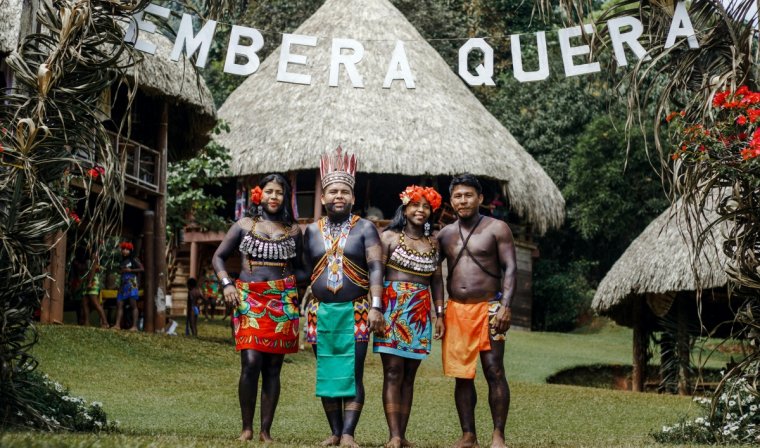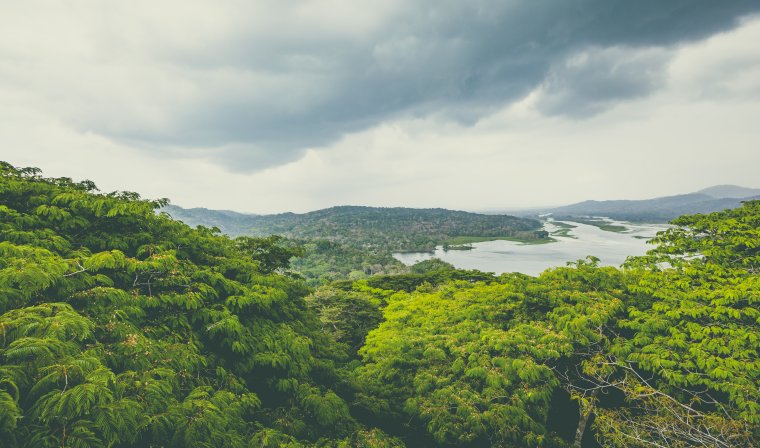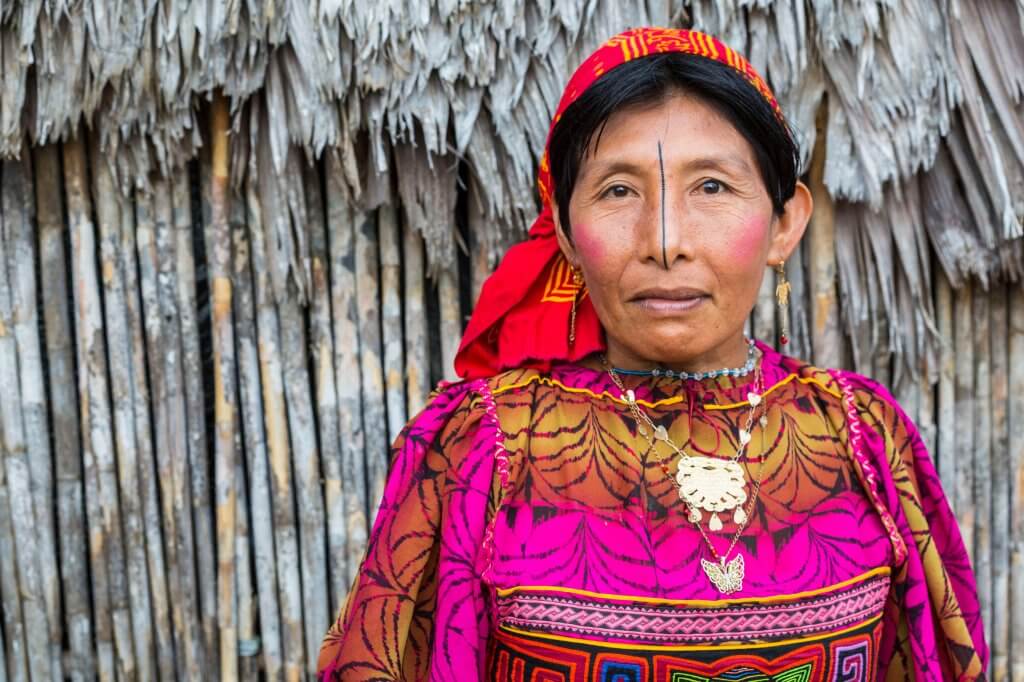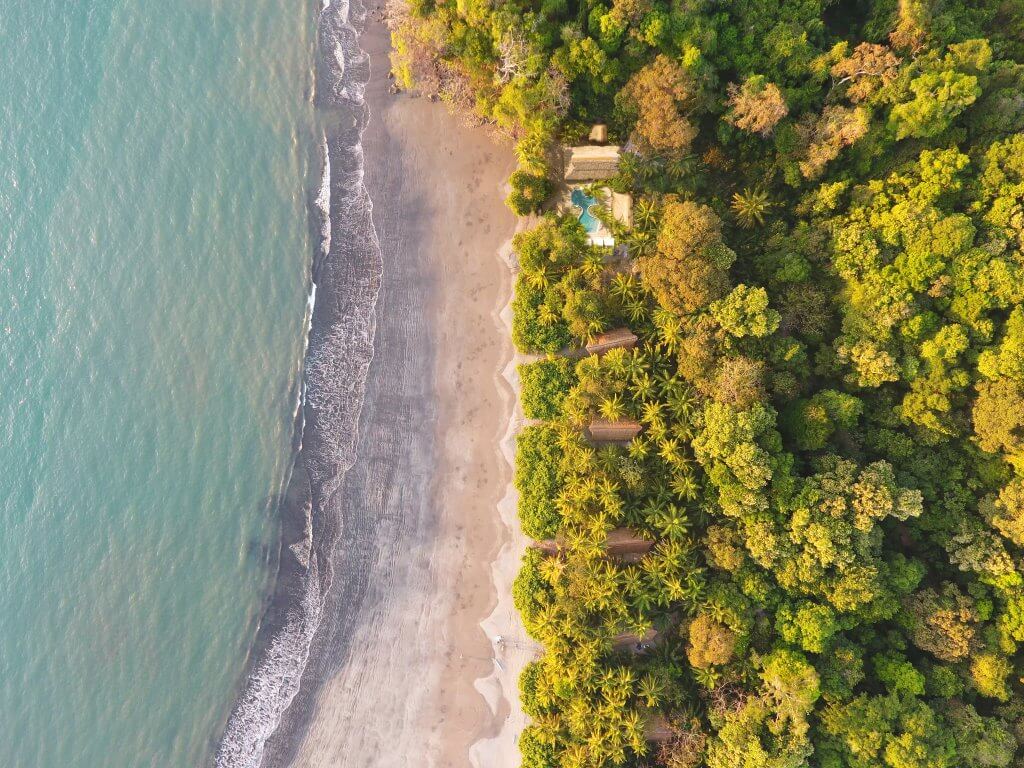Experiential Travel in Panama: Experience the Emberá Culture
Culturally immersive travel opens the door to deeper connections and invites you to see the world through the eyes of the communities that call it home.
In Panama, where modern life blends with centuries-old tradition, indigenous groups such as the Guna, Emberá, Wounaan, Ngäbe-Buglé, Naso, and Bribri continue to preserve their identity, language, and way of life amid the country’s growing global presence.
Learning about these communities and immersing yourself in their way of life allows you to experience the world through a different lens.
Who Are Panama’s Indigenous Tribes?
Around 17% of Panama’s population belongs to one of the country’s vibrant indigenous communities, each preserving their own languages, traditions, and ancestral ties to the land. Spread across the nation’s coasts, highlands, and jungles, these groups continue to shape Panama’s rich cultural landscape:
- The Emberá community live mainly along the rivers of the Darién and Chagres regions, and are admired for their artistic expression through jagua body painting, vibrant dances, and finely carved wooden art. Their way of life is closely tied to the tropical forests they have long protected and revered.
- The Wounaan are culturally related to the Emberá, although they inhabit similar rainforest regions and are renowned for their exquisite basket weaving and woodworking, marked by bold colors and intricate detail. Their spiritual worldview centers on respect for the rainforest, which they regard as sacred.
- The Guna people inhabit the San Blas Islands (known locally as Guna Yala) and parts of the Caribbean coast. They are celebrated for their colorful molas, along with their strong matrilineal social structure and deep sense of autonomy.
- The Ngäbe-Buglé reside in the mountainous west and are the largest of Panama’s indigenous groups. Distinctive for their colorful handwoven dresses and agricultural traditions, they sustain themselves through farming coffee, bananas, and rice while maintaining rich oral traditions rooted in music, myth, and community storytelling.
- The Naso are among the smallest indigenous nations in Panama and live along the Teribe River in Bocas del Toro. Uniquely, they maintain a hereditary monarchy led by a Cacique or king, and their way of life remains intertwined with the rhythms of the forest and river, from fishing to the use of medicinal plants.
- The Bribri are found mainly in Panama’s Caribbean lowlands and across the border in Costa Rica, and are known for their linguistic diversity and deep ecological knowledge. They cultivate cacao and bananas using sustainable methods and craft pottery, baskets, and textiles infused with ancestral symbolism.
Together, Panama’s indigenous peoples play a vital role in safeguarding both the nation’s cultural identity and its biodiversity, embodying a sustainable harmony between human life and the natural world.

Here, we take a closer look at the Emberá People…
Who Are The Emberá People?
The Emberá are one of Panama’s most celebrated indigenous groups, known as the “Guardians of the Panama Canal Jungle.” They primarily inhabit the remote river regions of the Darién and Chagres National Park, where dense rainforest and winding waterways form the heart of their territory.

Traditionally semi-nomadic, the Emberá maintain a lifestyle deeply tied to nature. They live in stilted, thatched-roof houses and rely on fishing, hunting, and sustainable agriculture.
The community’s intricate craftsmanship is instantly recognizable. Emberá artisans are renowned for their vibrant woven baskets, carved wooden figures, and body art made with jagua, a natural black dye derived from fruit that symbolizes beauty, protection, and identity.
Their music and dance are equally vital expressions of cultural continuity, often performed to the rhythmic beat of drums and flutes made from local reeds.
DOWNLOAD OUR BESPOKE PANAMA TO COLOMBIA JOURNEY PDF
Experiential Travel In Panama: Visiting The Emberá
It is possible to visit the Emberá during your luxury tour of Panama. From the capital of Panama City, travel north into Chagres National Park, a vast protected area home to an extraordinary concentration of wildlife and endemic species.
Immerse yourself in the indigenous culture as you glide across Lake Alajuela in a traditional canoe, passing dense tropical vegetation and enjoying glimpses of exotic birds, before arriving at an Emberá riverside village.

Here, you’ll be welcomed by the community and invited to share in their world. Cultural exchanges include learning about medicinal plants, traditional cooking, and sustainable living practices that have endured for generations. You will be treated to dance performances, storytelling, and a typical Emberá meal.
The highlight of this experience is the authentic human connection as you’ll have an opportunity to speak directly with community members, witness their crafts in the making, and understand how the Emberá achieve cultural preservation.
DOWNLOAD OUR BESPOKE PANAMA TO COLOMBIA JOURNEY PDF
Sustainability and Cultural Preservation
The Emberá people take pride in protecting their ancestral lands and maintaining a harmonious relationship with the rainforest. Through community-led tourism, they share their traditions on their own terms, ensuring that visitors contribute to cultural and environmental preservation.

Engaging with the Emberá community not only provides a rare window into Panama’s living heritage but also supports local initiatives that fund education, healthcare, and conservation projects. This responsible approach to tourism helps ensure that future generations can continue to thrive within their ancestral territory.
Tailor-Made Itineraries To Panama
Immerse yourself in the indigenous culture and embark on epic outdoor adventures in Panama with a bespoke, luxury tour…
DOWNLOAD OUR BESPOKE PANAMA TO COLOMBIA JOURNEY PDF


